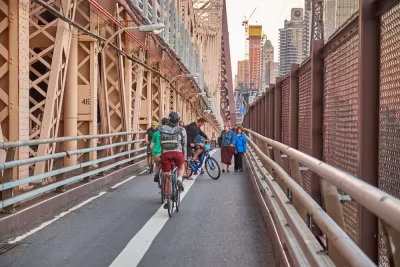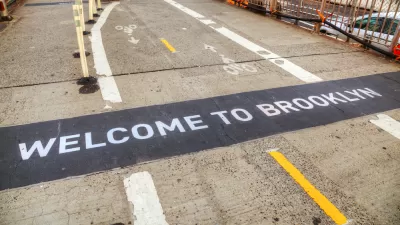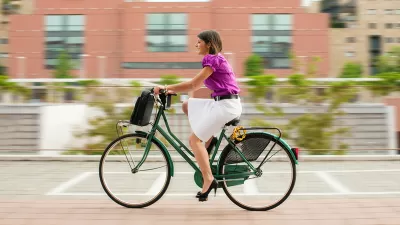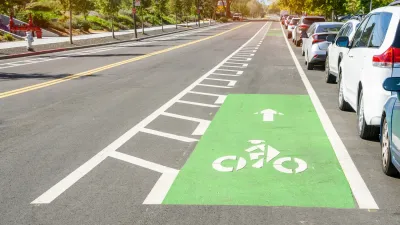Bike ridership nearly doubled after New York City installed a new bike lane on the Brooklyn Bridge.

Kevin Duggan reports that since New York City installed a new bike lane on the Brooklyn Bridge, the number of bike crossings on the famous span have increased by 88%. The new lane, which opened in September, replaced a car lane on the Manhattan-bound side of the bridge and adds what DOT Commissioner Hank Gutman calls a "critical connection" to the city's bike lane network.
The new lane reversed a years-long trend of declining bike ridership on the Brooklyn Bridge, which saw decreases in both months in 2020 compared to 2019, despite a bike boom across the city during the first year of the COVID-19 pandemic.
The increase in riders on the Brooklyn Bridge stands in contrast with reduced bike traffic on the other three bridges spanning the East River during the last two months, writes Duggan. "On the Williamsburg Bridge, daily bike traffic was down 13% in September and 16% in October compared to last year, and two-wheeled traffic on the Ed Koch-Queensboro Bridge was down 11% both months, according to DOT." Meanwhile, the Manhattan Bridge saw a 11% drop in bike traffic in October.
Last year, New York implemented a raft of policies aimed at improving active transportation infrastructure and making its roads safer for pedestrians and cyclists. The proposed $100 million Queens Ribbon Bridge would create a car-free connection between Midtown Manhattan and Long Island City, but the project remains speculative.
FULL STORY: Cycling on Brooklyn Bridge almost doubled after new bike lane opened, DOT says

Maui's Vacation Rental Debate Turns Ugly
Verbal attacks, misinformation campaigns and fistfights plague a high-stakes debate to convert thousands of vacation rentals into long-term housing.

Planetizen Federal Action Tracker
A weekly monitor of how Trump’s orders and actions are impacting planners and planning in America.

San Francisco Suspends Traffic Calming Amidst Record Deaths
Citing “a challenging fiscal landscape,” the city will cease the program on the heels of 42 traffic deaths, including 24 pedestrians.

Defunct Pittsburgh Power Plant to Become Residential Tower
A decommissioned steam heat plant will be redeveloped into almost 100 affordable housing units.

Trump Prompts Restructuring of Transportation Research Board in “Unprecedented Overreach”
The TRB has eliminated more than half of its committees including those focused on climate, equity, and cities.

Amtrak Rolls Out New Orleans to Alabama “Mardi Gras” Train
The new service will operate morning and evening departures between Mobile and New Orleans.
Urban Design for Planners 1: Software Tools
This six-course series explores essential urban design concepts using open source software and equips planners with the tools they need to participate fully in the urban design process.
Planning for Universal Design
Learn the tools for implementing Universal Design in planning regulations.
Heyer Gruel & Associates PA
JM Goldson LLC
Custer County Colorado
City of Camden Redevelopment Agency
City of Astoria
Transportation Research & Education Center (TREC) at Portland State University
Jefferson Parish Government
Camden Redevelopment Agency
City of Claremont





























